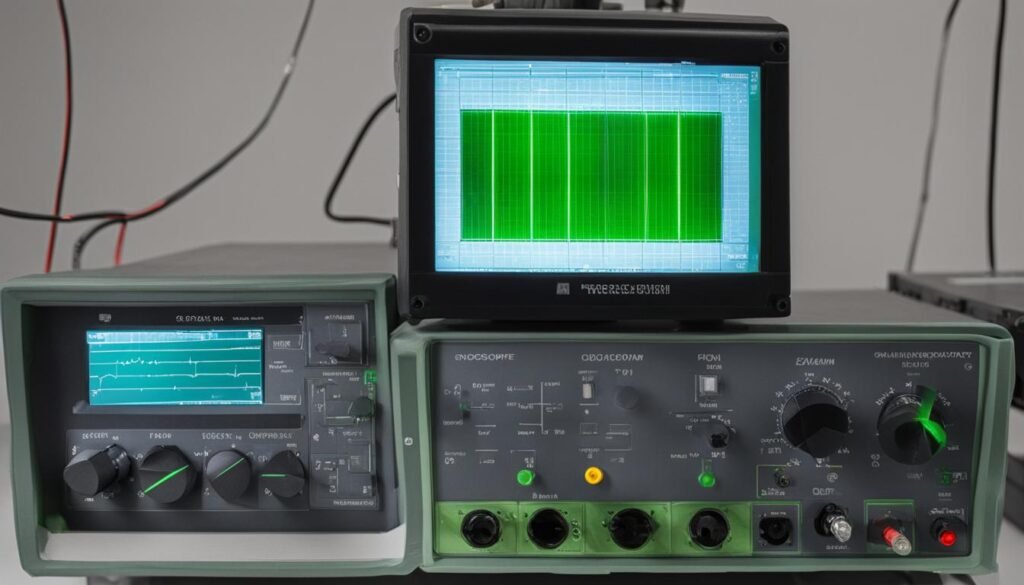To effectively test a laser using an oscilloscope, it is important to follow certain steps. The oscilloscope is a powerful tool that can provide valuable insights into the performance and characteristics of lasers. By understanding the correct setup and measurement techniques, you can ensure accurate measurements and precise analysis of the laser’s output.
Key Takeaways:
- Proper grounding of the oscilloscope is crucial for safety and accurate measurements.
- Setting the controls, such as volts/division and time/division scales, is essential for laser testing.
- Calibrating the oscilloscope periodically ensures accurate measurements.
- Connecting the probes properly, both the tip and the ground clip, is important for reliable testing.
- Compensating the probes balances their electrical properties to the oscilloscope, ensuring accurate measurements.
Setting Up the Oscilloscope for Laser Testing
When it comes to laser testing, proper setup of the oscilloscope is essential for accurate measurements and analysis. By following a few instructions, you can ensure that your oscilloscope is ready to effectively test lasers.
To begin, turn on the oscilloscope and select the appropriate channel for laser testing. Adjust the vertical and horizontal controls to set the volts/division and time/division scales to the desired levels. It is important to choose the right settings to capture the laser output accurately.
Next, set the channel input coupling to DC. This setting allows you to measure the laser’s direct current signal accurately. It is crucial to use DC coupling to avoid distortion in the measurement caused by the oscilloscope’s AC coupling.
Once the oscilloscope is properly set up, it is important to calibrate the instrument periodically. Calibration ensures that the measurements are accurate and reliable. By following the manufacturer’s instructions, you can calibrate the oscilloscope and maintain its performance over time.
Connecting the probes correctly is another crucial step in setting up the oscilloscope for laser testing. Ensure that both the probe tip and the ground clip are securely attached. This ensures a reliable connection and helps avoid any measurement errors or signal distortions.
Moreover, compensating the probes is necessary to balance their electrical properties with the oscilloscope. This can be done by connecting the probe to a vertical channel and adjusting it to display a square wave reference signal. By compensating the probes, you can ensure accurate measurements and precise analysis of the laser’s performance.
By following these instructions, you can confidently set up the oscilloscope for laser testing. With the proper controls, calibration, and probe compensation, you can effectively measure voltage, time, and pulse width to analyze the laser’s characteristics and optimize its performance.
Conclusion
In conclusion, the oscilloscope is a powerful tool for testing lasers, providing valuable insights into their performance and ensuring accurate measurements. By following proper setup procedures, including grounding, calibration, and probe compensation, the oscilloscope can be effectively utilized for laser testing. Understanding various measurement techniques, such as voltage measurements, time measurements, and pulse width and rise time measurements, allows for detailed analysis of the laser’s characteristics.
Utilizing an oscilloscope in laser testing enhances precision and improves laser technology skills. By employing this versatile instrument, engineers and technicians can diagnose laser issues, measure laser parameters, and conduct advanced analysis for laser development and optimization.
Whether it’s for diagnostics, measurement, or analysis, the oscilloscope is an indispensable tool in the field of laser technology. Its ability to capture and analyze the electrical signals generated by lasers adds a new dimension to laser testing, ultimately leading to advancements in laser technology and its applications.



